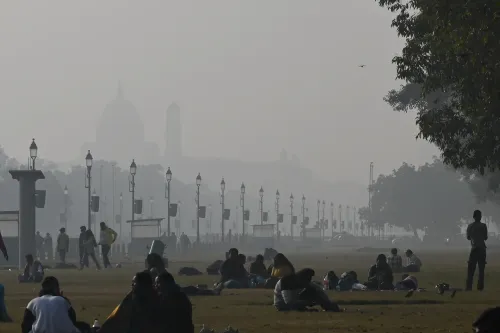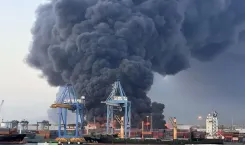Is Pakistan's Water Scare Over the Brahmaputra Justified?

Synopsis
Key Takeaways
- Assam CM Himanta Biswa Sarma rejects Pakistan's fear narrative about the Brahmaputra.
- China's contribution to the river's flow is limited to 30-35%.
- India generates 65-70% of the river's flow through monsoon rains.
- Reduction in water flow from China could potentially benefit India by reducing floods.
- Brahmaputra is fundamentally a rain-fed Indian river system.
Guwahati, June 3 (NationPress) Assam Chief Minister Himanta Biswa Sarma on Monday rebuffed Pakistan's recent narrative aimed at inciting fear regarding water issues related to the Brahmaputra River, labeling it a ‘groundless attempt’ to create panic over an imagined scenario.
In a sharply articulated message on X, Sarma addressed the concern, “What if China halts the Brahmaputra’s water flow to India?”, by providing a fact-based counterargument.
“Let’s expose this fallacy, not with fear, but with facts and national transparency,” Sarma stated, clarifying that the Brahmaputra is a river that originates in India rather than one that diminishes due to upstream interventions.
As per the Chief Minister's statements, China contributes merely 30 to 35 percent of the river's total flow, mainly from glacial melt and limited precipitation over the Tibetan plateau. The remaining 65 to 70 percent of the river's volume is sourced within India through monsoon rains and inflows from many tributaries in the Northeast.
Utilizing hydrological statistics, Sarma pointed out that while the river’s flow at the Indo-China border (Tuting) averages between 2,000 and 3,000 cubic metres per second, it significantly surges to 15,000–20,000 m³/s in Assam during the monsoon, demonstrating India's substantial contribution to the river's overall volume.
“The Brahmaputra is not a river India relies on upstream. It is a rain-fed Indian river system, bolstered after it enters Indian territory,” he further stated.
Sarma also contended that even in the unlikely scenario of China reducing the water flow, such an action might actually be beneficial for India by mitigating the recurring floods in Assam that displace hundreds of thousands annually.
He maintained that China has never officially threatened to weaponize the Brahmaputra and dismissed such notions as speculative fear-mongering.
In a pointed remark towards Pakistan, Sarma indicated that the country, which has historically profited from the Indus Waters Treaty, is now “panicking” as India reclaims its rightful water sovereignty.
“The Brahmaputra is not governed by a singular source. It is energized by our geography, our monsoons, and our civilizational resilience,” he concluded.










